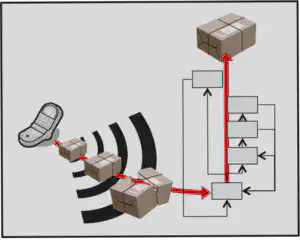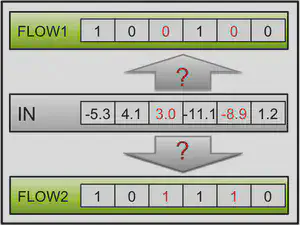

Voice over IP (VoIP) has in recent years become a main contender for audio-visual communications, and its widespread use is anticipated to supplant a sizable amount of classical telecommunication via phone lines. Of special importance is the use in wireless devices, and how to improve the quality of communication, from a user point of view in respect to voice quality as well as from a provider point of view in respect to efficient communication.
In current systems for wireless IP transmission of audio-visual signal, bit errors on a wireless link are detected by CRC on the physical layer and erroneous packets are discarded. However, many voice and video coding schemes make use of error concealment, and therefore prefer the reception of partially corrupted data to no data at all. Being able to receive partially corrupted data therefore is a vital point in enhancing the quality of VoIP communication, especially over wireless links, where bit errors are much more common.
However, if errors occur, the application needs to be made aware of these. Depending on whether it accepts partially corrupted data, it will receive the packet, or the packet will be dropped. An important problem here is the occurrence of errors in packet headers, because these contain management information vital for identifying the correct receiver. These errors therefore have to be corrected while the packet is processed in the network stack. The goal of this work is to develop heuristic packet repair schemes that can identify errors in headers and repair them by attributing the packets to their correct communication endpoints, while at the same time preventing misattribution.
One important building block is the use of soft information, that is, the confidence that the physical layer placed in its decision whether a bit decoded from the received analog signal is a 0 or 1. This approach has been used for some time already in turbo coding schemes, and is also used for specialized voice codecs. In a packet-switched network, however, the two decoders would reside in the APP and PHY layer, respectively, and therefore be separated. Cross-layer signaling must be used to restore a direct communication path between the two. In addition, the soft information that these decoders work with can be used to improve on error correction in protocol headers, by identifying which errors coincide with low confidence in the correct bit value. Finally, correct or reconstructed headers can be used in the same way as pilot bits, boosting the perceived speech quality of a VoIP stream after decoding with an iterative decoder.